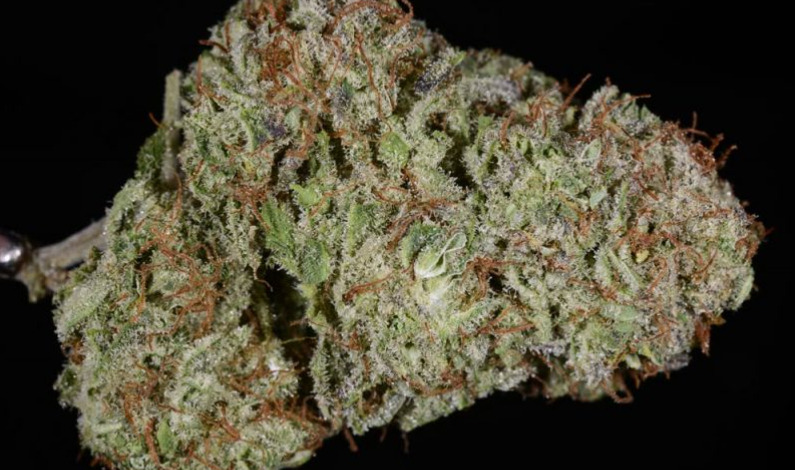The fact that competition breeds innovation is undeniable. In some cases, though, it leads to bitter friction. Take, for example, the epic, decades-long rivalry between the Los Angeles Lakers and the Boston Celtics, or the ongoing Twitter beef between Wendy’s and Burger King. The cannabis industry is not immune to such contention.
For cannabis connoisseurs, perhaps the most legendary rivalry is that between the self-proclaimed “King of Cannabis,” Arjan Roskam, and Scott Blakey, known by his breeding name, “Shantibaba” — a dispute that dates back to when I was just a kid playing on the monkey bars at recess in elementary school and thought “weed” and “pot” were different drugs.
As the story goes, a number of prominent breeders, including Roskam and Blakey, founded and worked at the Green House Seed Company and the Green House Coffeeshops. During this time, the company produced a number of today’s most popular strains, including the White family and several High Times Cannabis Cup winners. In 1998, however, Shantibaba parted ways with the Green House Seed Company and went on to create Mr. Nice Seed Bank with Nevil Shoenmakers and Howard Marks (aka Mr. Nice). The divorce between the breeders has spiraled into one of the most dramatic and public feuds in the world of cannabis, with each attacking the other in popular genetics forums (if you can’t tell, weed nerds spend a lot of time in the forums).
Critical Mass by the numbers: $12/gram, $35/eight at Oasis Cannabis Superstore, 6359 East Evans Ave., Denver
Ultimately, both breeders experienced great success and ascended to industry-wide notoriety. Perhaps their conflict led them to constantly try and beat one another at the Cannabis Cup and elsewhere. The resulting genetics were truly a gift for cannabis consumers. After starting Mr. Nice Seeds, Blakey and Marks developed such strains as Black Widow and Critical Mass.
The latter is extremely prominent in Spanish cannabis circles. A reviewer for Cannabis Now even dubbed it the Blue Dream of Barcelona due to its ease of cultivation and high indoor yields — quite a compliment, considering that Civilized reported that Blue Dream was the most popular strain sold in both Colorado and Washington stores last year.
As with many of Holland’s most popular hybrids, Green House and Mr. Nice genetics are firmly embedded in Colorado cannabis circles.
One such grower that utilizes these Dutch genetics is Fat Face Farms, a Denver-based wholesale cannabis cultivator. Currently, Oasis Cannabis Superstore locations are stocking Fat Face product — and surprisingly, publicly displaying who grew it.
Here’s a random tidbit about wholesale cannabis: Of the god-knows-how-many stores I have visited, this is the only one I’ve ever seen in Colorado that identifies who grew its wholesale product. The signage at Oasis brought back memories of shopping at Ganja Goddess in Seattle, where, because of Washington’s rule that stores are prohibited from growing product, most places post grower-specific labels.
Colorado’s regulatory system, however, was built on vertical integration, meaning sellers must grow most of their own. This made it an easy assumption for shoppers to know where their weed was coming from, but that rule was lifted in late 2014. The fact that most Colorado stores don’t disclose the source of their wholesale flower is not intentional, and in fact, most will tell you if you ask. I predict that as more wholesale cultivators emerge, Washington-style branding and packaging will become more prevalent as growers move to protect their brand identity.
According to Mr. Nice Seeds, Critical Mass was formally known as Big Bud and is a cross of a heavy Afghan indica and Skunk #1 (presumably the legendary original developed by David Watson at Cultivator’s Choice).
The nug was tight and dense with dull orange hairs on the end. The uniform trichome coverage made it look soft and fluffy. It was primarily sweet and fruity, with both floral and musky hints. The leaves were a shade of olive green with some bright neon patches. When I broke it open, a citrus fragrance emerged. I put the broken nug up to my nostril to take in the scents. It slapped me right in the nose, almost causing me to sneeze.
I took the smaller of the pieces, crushed it between my fingers and loaded the chillum.
The first hit was fruity but had a dull sweetness, akin to a pear. Immediately after I exhaled, I coughed and it tasted like I just swallowed a handful of pine needles. I killed the bowl in a couple more hits and went back inside. As I walked in, I noticed an aftertaste of fresh avocado.
I felt a warm sensation in my upper back, creeping its way into my shoulders and upper arms and slowly relieving my soreness and tension. I didn’t even realize I had been clenching my shoulders until they relaxed a few minutes later. I went to watch a quick episode of “Better Call Saul” before bed and noticed that, while I wasn’t mentally stimulated, the high wasn’t debilitating. I had to dim the lights because my eyes seemed hypersensitive to the bright white. After the show ended, I had no problem melting into my mattress.
“Critical mass” is the minimum size or amount of something required to start or maintain a venture. The number of cannabis-friendly voters in Colorado needed to reach a critical mass in order for us to have the constitutional right to buy weed in a store (and for me to write reviews). Thanks to that critical mass of voters, I have the privilege of writing about this Critical Mass.
It’s a wonderful time to live in Colorado.
Originally written for and published by The Cannabist, a division of The Denver Post, on June 8, 2016


